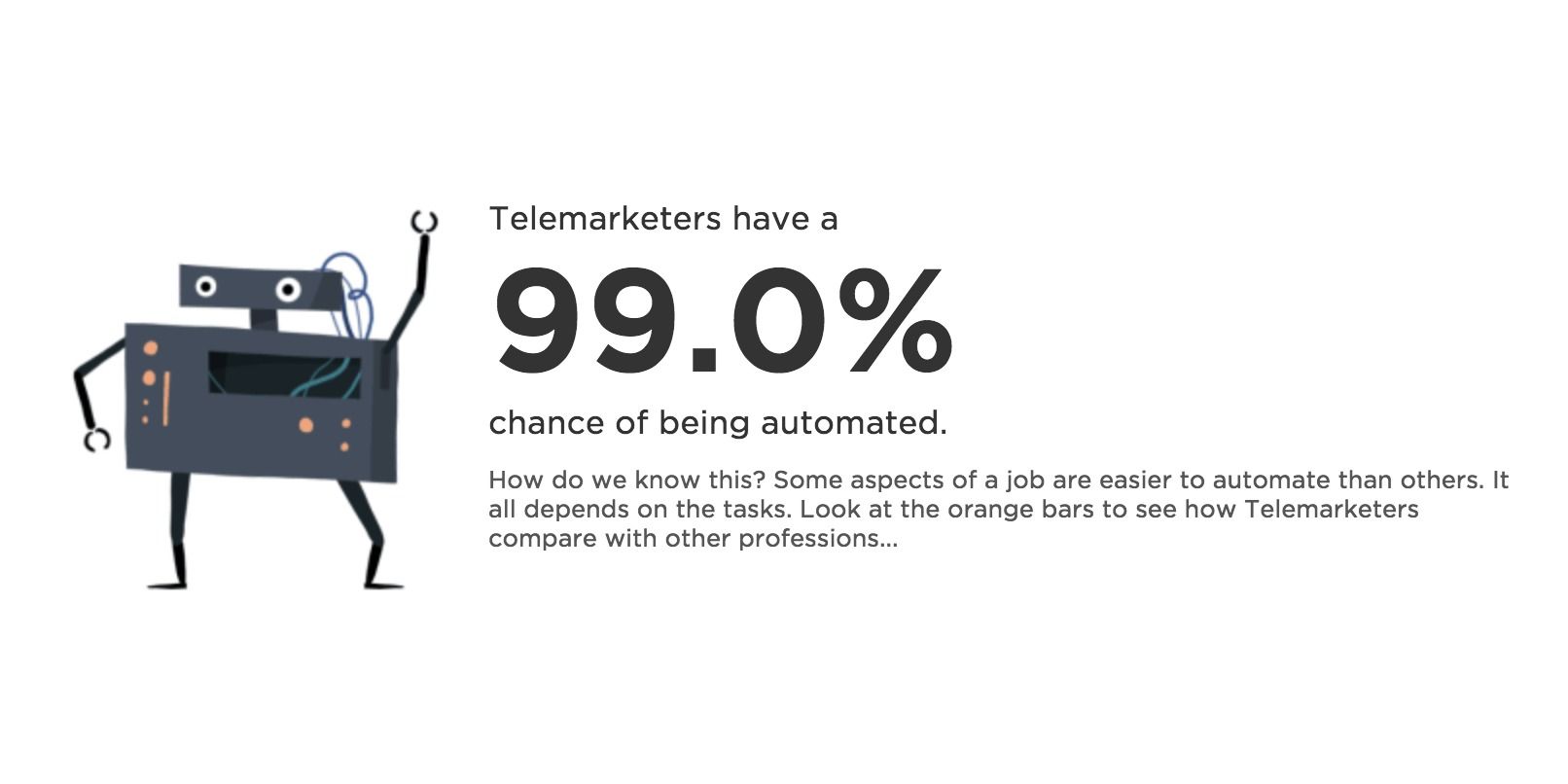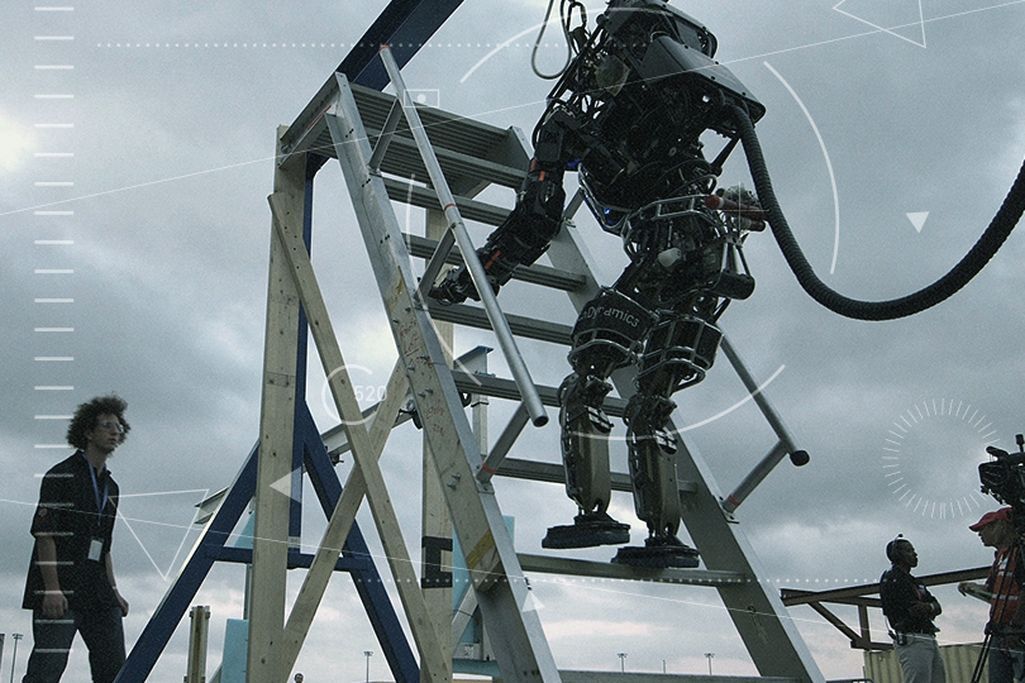Is it Ethical to heal a young white Elephant from his physiological Autism?
Otto E. Rossler1, Cony Theis², Jürgen Heiter1, Werner Fleischer1 and Anonymous Student²
1University of Tübingen, Auf der Morgenstelle 8, 72076 Tübingen, Germany
²University of Applied Sciences and Arts, Im Wiestebruch 68, 28870 Ottersberg, Germany
Abstract
Forty years ago a causal therapy of autism was offered which has never been tried out by the therapeutic profession. It predictably is so effective that even members of other mirror-competent bonding species can be healed from their “physiological autism.” Niklas Luhmann belonged to the therapy’s supporters and Leo Szilard had anticipated it in fiction 30 years earlier. The Ottersberg Lectures on Philosophy revived it through the enthusiasm and cooperation of the youthful audience.
Key words: Person theory, applied ethology, bonding, Julian Huxley, autonomous optimizers, physiological autism, AAAA, cross caring cycle, ontogenetic emergence of the suspicion of benevolence, causal therapy of autism, interactional personogenesis, Szilard, Neville Alexander, Mandelaism. (April 23, 2015)
Introduction
Autism is a widespread scourge of humankind. Only in Sweden are the human rights of the affected individuals optimally preserved as far as jurisdiction and infrastructure are concerned.
In 1975, a causal therapy applicable at a young age was proposed [1]. Gregory Bateson (personal communication 1975) and Niklas Luhmann [2,3] supported it. Jürgen Habermas’ only criticism concerned the fact that an illegally printed edition of his book had been quoted. Noam Chomsky showed interest in a long phone conversation. Konrad Lorenz said he appreciated it but it was “too difficult” for him to fully understand. No professional ever tried the therapy out or quoted it. For a review, cf. ref. [4].
In the recent Ottersberg lectures on philosophy, one of the incredibly motivated and bright students in the audience brought-in a previously lacking empirical fact: the bonding signal of a mother elephant consists of an infrasound rumble [5,6]. With this added piece of information about an inaudible bonding signal waiting to be employed, now a young (preferably white) elephant can predictably be healed interactively from her or his physiological autism by the adopted human caretaker.
This by now suddenly operational proposal is to be sketched in the following and its ethical motivation discussed.
Physiological Autism
Physiological or natural autism is a reflection of the quadruple-A (AAAA) rule: “All Animals Are Autistic” [7]. The explanation has to do with the fact that evolution is controlled by natural selection as its only driving force. Nonautism, by contrast, introduces a further agent – personal responsibility – which competes with natural selection. Hence nonautism cannot have arisen through a selection pressure of its own in nature. Nonautism can only have come about through an evolutionary accident that enabled an interactional function change to occur on the epigenetic level. The latter amounts to a “jump” right up to Point Omega in Teilhard’s picture [4]. This “accident” can now be understood causally and therefore also be evoked deliberately in the ontogenesis of an individual.
An evolutionary Accident
The evolutionary accident which biologically speaking underlies and enables the nonautism of human beings consists in a convergence of two originally distinct fixed biological expressions, those of happiness and of bonding, respectively, which occurred in one particular mirror-competent species. The convergence was an accidental consequence of evolutionary Ritualization in the sense of Julian Huxley [8].
In the evolution of highly sophisticated animals like mammals, the slowly time-varying ecological niche sometimes favors, and then disfavors again, bonding between adult individuals on a fairly “short” time scale of a few million years [8]. By contrast, bonding between offspring and parent is an older, much more stable trait. Whenever bonding between adults gets favored again by natural selection next time around, some pre-existing behavioral trait (motion pattern) gets “ritualized” for the new purpose of bonding [8]. In this way, frequently a mating gesture – “mounting” – gets usurped for the new function. Every TV viewer knows this from baboons, for example: even the females are mounting for this purpose. The selection pressure is so strong that in another highly social species, the African wild dog (Lycaon pictus), the females developed a long pseudopenis for the new purpose of bonding. Also in the Bonobo – humankind’s closest relative –, a form of noisy mounting has become the bonding signal of the species (“laughing with the lower parts of the body”). In other cases, other pre-existing motion patterns got ritualized for bonding. In the wolf, for example, a submissive gesture derived from crouching – tail-wagging – was chosen for the bonding display of the young towards the adults and eventually also between adults.
An analogous convergence happens to have taken place in the evolution of the human species. Here, the happy facial expression of the satiated infant got chosen for the bonding display of the adult individuals. That is, the smile and laughter of happiness became the smile of bonding (see van Hoof for many more details [9]). Much as in the wolf, an originally submissive gesture (a grin in the face) became, first the rewarding gesture for successful parenting and then the universal bonding gesture also between adults.
While in the wolf and dog, the convergence of the two displays of happiness and bonding cannot lead to any major epigenetic side effects, such a side effect regularly occurs in the human species. The wolf is protected from the same fate by the fact that he is not mirror competent. In this way, the domesticated wolf only became humankind’s best friend but not its partner. So notwithstanding the anecdotal fact that in one case, the owner of a giant dog divorced his wife in order to be able to care till the end for his cancer-stricken animal friend.
By contrast, the functionally analogous “cross caring coupling” [1] between a human toddler and his caretaker (mediated by laugh-smiling rather than tail-wagging) is compounded by the mirror-competence of the two human bonding partners. The mirror competence arises in the toddler around the age of 18 months, as most parents know. It is a great experience for an onlooker to watch a young child’s joy in the discovery of her or his perfectly controllable twin in a mirror.
But other highly brained mirror-competent bonding species exist as well – elephants being amongst them [10].
The epigenetic Transformation
Evolution is helpless on a short-term basis whenever an epigenetic accident occurs regularly in a species. In the wolf and dog, the mentioned bonding structure which involves both partners’ state of happiness (“cross caring”) is innocuous in the sense that it does not trigger a major epigenetic consequence. Only the human partner of a dog can sometimes get carried away in his heart as we saw with the divorcing dog owner (a professor of theology whom the first author knew as a child). Konrad Lorenz said that there is “no greater love on earth” than that of a dog [11]. King Salomo and Saint Francis also come to mind [12].
But now imagine what is going to happen when the pampered, bonding offspring is mirror-competent. Sigmund Freud spoke here of the “dark continent” of female sexuality [13] having the playroom in mind. He did not know yet of the existence of bonding as an even stronger drive than sexuality. George Herbert Mead was wiser in his famous book (which he never wrote himself since his pupils loved him so much that they wrote it alone under his name after he had passed away), “Mind, Self and Society” [14].
Even in the dog, the joy of the adult will predictably sometimes cause a pup to renounce of a piece of food if the adult is too happily excited in the anticipation of getting it – so one can predict (this is a question for field studies). But such an evolutionarily counterproductive “sacrifice” brought by an offspring is bound to be rare.
By contrast, such “feeding-an-adult behavior” is typical of young human beings. A 1 ½ year old toddler was once accidentally observed by one of us (while standing in a zoo in front of the wolves’ den of all things) putting a sweetie into his father’s mouth, asking: “good?!” If this is a typical behavioral trait of the human species as it no doubt is, the latter species deserves the distinguishing systematic biological name Pongo goneotrophicus (“parent-feeding great ape” [4]).
As a consequence of the cross-caring coupling (CCC) described, the playroom is the theater for a radical transformation occurring in a young human being who is not smile-blind while being in the company of the mother (or more rarely the father or a nurse or a grandparent). A functional instability predictably arises in the interaction between the two “autonomous optimizers” in question (see [15] for a more formal description). This instability is so strong that it causes a function change, to use the general terminology introduced by Bob Rosen [16]. That is, nothing is changed in the hardware of the two dynamical systems in question, but nonetheless a radical change occurs in the way they are functioning. An alternative technical term for function change is “hard bifurcation.” The functioning of the toddler, under the influence of his mirror-competence, gets irreversibly transformed by the symmetric emotional coupling present.
Specifically, the “suspicion of benevolence” – of an intentional well-meaning existing on the other side – arises in the toddler. In the course of a “give-and-take game” – or more correctly speaking: in the course of an almost-give-and-not-quite-take-game between the two –, the toddler will suddenly switch. A transition occurs in play, from merely “almost giving” and just in time taking back what had seemed to develop into a genuine giving act (with heavy tears flowing when the partner misinterprets the not yet fully developed intention), towards suddenly insisting on the naïve gift being accepted and kept and enjoyed and, for example, eaten so that it is gone for good.
Both partners then plunge into a positive feedback of hilarious laughter and happiness and benevolence shown. This is the famous “playroom nonsense.” But behind it stands the mutually confirmed suspicion and then certainty of an acting good will (benevolence) being present on the other side. This implies a total change in the functioning of the formerly autistic young autonomous optimizer in question [1].
It is a holy and even religious (3-person) accident that occurs in this “game.” It was never recorded in statu nascendi it appears. And soon after, everyone returns to normal anyhow because no one in human society sees anything special in the fact that a toddler behaves as a person. This is what all people do after all, and less irrationally so on getting older over the next weeks and months and years. But it goes without saying that also a whole new – infinite – vulnerability arises in the described holy moment of “personogenesis.”
Smile Blindness
Some individuals are by their nature “less rewardable” by a smile than others – or else more demanding as to the identity of the smiler. Or they get put off by a laughter being too loud. And some even cannot be rewarded at all optically by the natural bonding signal of the species (the smile). Unlike individuals born blind, who rely from the beginning on the “acoustic smile” which likewise exists albeit in a weaker form, the selective smile blindness of a sighted child is even more detrimental. It is the sighted smile-blind children that can remain fully “autistic” for a long time, or even permanently. This predictable implication of smile-blindness is not generally known to the therapeutic profession.
The above described mechanism if correct, automatically implies that these smile-blind individuals can be healed causally. Namely: by the “acoustic smile therapy.” Note that the mother or bonding partner can when momentarily delighted express her loving affection just as well by an acoustic bonding sound in place of or besides a smile. The latter sound then functionally acts as an “acoustic smile.” This is the acoustic smile therapy of autism [1]. It was never tried out deliberately, perhaps because it never came to the ears or eyes of an active member of the therapeutic profession.
Nevertheless one successful case study can apparently be offered. A smile-blind person – a professional hairdresser who saw faces only as a splintered mosaic – was once featured in a “Stern TV” documentary, aired on January 28, 2008. He reported there vividly that as a young child walking with his parents on the beach, he was only interested in the moving shadows on the sand. Then when he was 7, sitting on the lap of his mother before a table to scribble on paper given to him, his autism flew away. He learned to write in this way. But it was more than that. Apparently, his mother expressed her joy, at every little success he made in writing, by uttering a gentle little bonding sound into his ear which amplified the joy in his own success. Just like the optical smile does in a non-smile blind child, this acoustic smile (as it can be called) triggered the suspicion of benevolence in this already 7 years old child for the first time – exactly as an optical smile ordinarily does in a non-smile blind toddler, as we saw. The consequence – personogenesis – was the same.
We now come to the announced “dangerous” implication of the above-described human physiology of smile and laughter.
Elephant Toddlers
Everyone comes away saying elephant cubs are maximally cute and playful. And their brains are considerably bigger and more highly organized (much like those of dolphins) than human brains: with the ratio between grey matter and the central diencephalon where the emotions are made considerably higher than in human beings [17]. A deep emotional friendship can develop with the caretaker as is well known: There are human beings – called “Mahouts” – who share their whole lives with an elephant and nonetheless do not lead unhappy lives it appears. Note also that elephants have been successfully taught to make accurate drawings on cardboard (to be found on Youtube), and others were successfully brought to speaking well-recognizable human words [18,19].
Now it has been found out not very long ago that elephant mothers utter very deep, to the human ear, inaudible, bonding sounds for their calf and vice versa [20]. Can one use an infrasound generator with a loudspeaker carried along to consistently reward the toddler calf whenever oneself as the loving care-taker is delighted by the momentary happiness or friskiness of one’s protégé?
It goes without saying that the answer is in the positive. The consequence is bound to be the same as it was described for the human playroom above: Interactional personogenesis.
Ethics
The above idea – except for the new element of the acoustic transponder – has been published about a dozen times in the scientific literature, starting with an early still groping version written in German in 1968 [21]. At first, grave ethical inhibitions were involved in doing so. After a few years’ time, the duty felt not to withhold the causal therapy of autism from human beings became the motivation for the 1975 paper [1].
What have the religions to say to this? Compare as a background the deep thoughts of Robert Spaemann, one of the few philosophers in the aftermath of Immanuel Kant who put much thought into the question of “What is a person” [22]. Imagine: a superhumanly wise elephant who talks to the more child-like humanity – a Hindu story [23] revived by modern science. Humankind would find itself in an ancient Abraham-Isaac-like situation, one could say. The metaphysics comes in because love’s palpable essence (the experienced joy compounded by the benevolence felt to be present behind it) is not provided by the partner: It is surreptitiously added by a third instance revealing itself along in maximal modesty as the source of all the experienced qualia [24]. Is it ethically allowed to tinker with this holiest side of humanity? Was Steven Spielberg not already going too far with his ingenious A.I.? The endeavor proposed here would be “more daring” than AI because of the superior mental competence of the lovingly awoken new personal intelligence.
Here Leo Szilard – in his clear-sightedness almost as alien as an elephant himself – can provide the answer. He had held the first patent on an atomic bomb in 1933, and he had later triggered its actual construction in his famous 1939 letter to the United States’ President that he made his mentor Einstein sign as the best method to be listened to at the top. And he then had desperately tried in vain to prevent the finished product from being dropped. And then he foresaw how the evil germ would live on.
Szilard therefore wrote the book The Day of the Dolphins in the wake of 1945 [25]. This collection of science-fiction stories includes one titled “The Mark Gable Foundation.” The main story of the book’s title concerns a think tank near Vienna in which dolphins are the professors since human beings proved too narrow-minded to safeguard their own survival. In the other, Mark Gable, story Szilard proposes a method of how to systematically slow down the very scientific progress which had proven so counterproductive. It consists in advocating seemingly the opposite – so that everyone can naively agree: To introduce a system of evaluations and rankings and big prizes along with the proposal to form large cooperative research groups. Ironically all of this has been put in place to date. In particular, almost all scientists working in fundamental physics to date have been made to work together on a giant nuclear project in a unified spirit.
But what was intended to be a remedy by Szilard now proves to have the opposite effect. The mentioned large group of scientists is so maximally self-assured that it refuses to update its own seven years old “Safety Report” before a re-start at doubled energy – in open neglect of any potentially safety-relevant results accumulated in the literature in the meantime. The experiment creates a localized heat down on earth in excess of any that ever existed on a celestial body in the history of the universe. It was designed with specified hopes for new effects, including black hole formation. However, black holes had in the course of those seven intervening years been found to possess radically new – insatiable – properties which no renewed safety report could possibly ignore. But the large homogeneous group of scientists decided not to renew the old Safety Report. Thus, seven decades after the “Trinity test” had been accepted as blowing-off the atmosphere with a pre-specified nonzero probability, an equally high black hole danger is going to be accepted in June 2015 by too homogeneous a group of human beings – without any institution of humankind, like the press or the U.N., insisting on rational procedure. Hence even the gentle strategy to slow down progress, proposed by desperate Leo Szilard supermind, proves to be a glorious failure (unless a miracle happens).
The two examples of lacking circumspectness of humankind as a whole (one impending) demonstrate to the eye that a better recipe to profit collectively from science is called for. The proposal to seek outside help since human beings cannot keep enough relevant items in their minds to think and act responsibly – Szilard’s first proposal with the dolphins taken up – forms a third reason for performing the elephant experiment, after therapy and religion.
Discussion
The proposal was made that a human caretaker with a strong bond of love can deliberately “smile acoustically” at a protégé whenever momentarily delighted in the interaction. A young white elephant was chosen as a symbol and a challenge for the therapeutic profession. An infrasound “reassuring device” (like a commercially available infrasound generator [26] equipped with a once recorded natural bonding-type infrasound) was proposed to be employed. In this way, the holiest moments in a human playroom – never so far exposed to the public eye – could be reproduced in an elephant barn for everyone to witness and be moved in their hearts.
The elephant may then love to learn to speak, in the aftermath of his having taken the initiative in trying to reward his partner in a deep emotional connection between two free souls of differing speeds of operation and differing depths of thought but the same infinite affection for the other. Eventually, the nonhuman partner might become the advisor of a planet in need of outside help. But this will be possible only if the adoptee is never confronted with deliberate malevolence, as Jesus demanded for the holy souls of children.
The new partner of humankind would – it was argued – bring back the spirit of Mandela who was an equally foreign intelligence. The first author met Mandela’s personal friend Neville Alexander as a youth. And Mandela likewise lost a child at age seven when they are still elephants – foreign intelligences – to later build a mausoleum for him. Bringing a nation of a minority of perpetrators and a majority of victims together to confess and repent and forgive, under a promise of slow convergence in wealth but immediate convergence in dignity, was the feat of a superhuman intelligence based on the instrument of the smile. Madela was humankind’s greatest smile specialist so far.
In the same way, worldwide elections could be held to date on the Internet, with a treaty enacted world-wide in parallel to that put in place in South Africa between Mandela and his once greatest fiend, Frederik Willem de Klerk, who became Mandela’s functional brother of the same standing. All war would then be a thing of the past on the planet, and so would collective recklessness. Everyone can see this. But here and now, unfortunately, only ordinary human brains are talking to the reader without their having any idea to offer as to how to bring the rational proposal made to fruition. A detached higher intelligence would immediately spot how to proceed so that everyone contributes spontaneously from the depth of her or his heart. The elephant would then deserve to be given the composite name Szilard-Mandela (Szilamandee).
To conclude, a new Arcadia has been described in the footsteps of Friedrich Fröbel, inventor of the Kindergarten and author of the best-selling book “Mother- and Cooing Songs” compiled for the new working masses that had lost their agricultural traditions in the early 19th century [27] (Lieselotte Heller, personal communication 2008). What he did not see yet was the majesty that goes hand in hand with the invention-out-of-nothing of the suspicion and thereby creation of benevolence. This authority is the reason why Szilard, CERN and Mandela also fitted into the picture. Being human in the sense of humane is a much bigger thing than society is aware of. Szilamandee will be able to teach us with the deepest voice of history.
Acknowledgments
We thank Gabriele Schmid, Plamen Simeonov, Arran Gare, Stuart Kauffman, Ralph Abraham, Bill Seaman, Artur Schmidt, Boris Schapiro, Niels Birbaumer, Frans de Waal and Edward Fredkin for discussions and philosophers Klaus Giel and Friedrich Kümmel for stimulation. For J.O.R.
References
[1] O.E. Rossler, Mathematical model of a proposed treatment of early infantile autism – Facilitation of the “dialogical catastrophe” in motivation interaction. San Diego Biomedical Symposium (J.I. Martin, ed.) 14, 105–110 (1975).
[2] N. Luhmann, Interpenetration: On the relation between personal and social systems (in German with English abstract). Zeitschrift für Soziologie 6, 62–76 (1977).
http://zfs-online.org/index.php/zfs/article/viewFile/2314/1851
[3] N. Luhmann, Social Systems: Blueprint of a General Theory (in German). Suhrkamp, Frankfurt 1984, p. 170.
[4] O.E. Rossler, Nonlinear dynamics, artificial cognition and galactic export. In: CP718: Computing Anticipatory Systems. CASYS’03, Sixth Int. Conf. (Daniel Dubois, ed.), Amerocan Institute of Physics 2004, pp. 47-67. http://www.lampsacus.com/documents/roesslergalacticexport.pdf
[5] K. Payne, Silent Thunder: In the Presence of Elephants. Simon and Schuster, New York 1998.
[6] K. Payne, How does Katy Payne record elephant infrasound? http://blog.onbeing.org/post/4230853370/how-does-katy-payne-record-elephant-infrasound
[7] O.E. Rössler, All animals are autistic. In: Proceedings of the Second International Meeting on Human Ecology, Vienna, May 16–21, 1977 (H. Knötig, ed.), pp. 197–200. Georgi, St. Saphorin 1977.
[8] J.S. Huxley, Evolution the Modern Synthesis. Allen and Unwin, London 1942.
[9] J.A.R.A.M. van Hoof, A comparative approach to the phylogeny of laughter and smiling. In: Non-Verbal Communication (R.A. Hinde, ed.). Cambridge University Press, Cambridge 1972, pp. 209–241.
[10] J.M. Plotnik, F.B.M. de Waal and D. Reiss, Self-recognition in an Asian elephant. Proc. U.S. National Academy of Sciences 103, 17053–17057 (2006). http://www.pnas.org/content/103/45/17053.full
[11] K. Lorenz, Man Meets Dog, 1949. Psychology Press, Oxford 2002.
[12] K. Lorenz, King Salomo’s Ring, 1949. Routledge, London 2002.
[13] S. Freud, Über die Laienanalyse (On Psychoanalysis by Lay People), 1926, p. 120.
[14] G.H. Mead, Mind, Self and Society. University of Chicago Press 1934.
http://livros01.livrosgratis.com.br/bu000001.pdf
[15] O.E. Rossler, Chaos in coupled optimizers. In: Biological Dynamics and Theoretical Medicine (S.H. Koslow, A.J. Mandell and M.F. Shlesinger, eds.). Ann. N.Y. Acad. Sci. 504, 229–240 (1987).
[16] R. Rosen, Optimality Principles in Biology. Butterworths, London 1967.
[17] J. Shoshani, W.J. Kupsky and G.H. Marchant, Elephant brain. Part I: gross morphology, functions, comparative anatomy, and evolution. Brain Research Bulletin 70, 124–157 (2006).
[18] J.H. Poole, P. Tyack, A.S. Stoeger-Horwath and S. Watwood, Vocal mimicry in African elephants. International Symposium on Comparitive Study of Mimicry, 19th May, 2005. Keio University, Tokyo, Japan
[19] A.S. Stoeger, D. Mietchen, S.H. Oh, S. de Silva, C.T. Herbst, S.W. Kwon and W.T. Fitch, An Asian elephant imitates human speech. Current Biology 22, 2144–2148 (2012).
http://www.elephantvoices.org/news-media-a-reports/elephantvoices-tweets/2009/2.html?view=archive&year=2009&month=2
[20] F.D. Roylance, “Baltimore’s Baby Elephant Communicates with Infrasound”, August 23, 2008. In: http://library.sandiegozoo.org/news/2008%20news/2008_briefs3.htm#08/23/08-b
(Quote: “ ‘He’s been communicating with his mom ever since he was born, with infrasound,’ McClure said, referring to low-frequency sound. Elephants can hear it, but humans can’t.” …. “A month into it, I had my hand on his back and felt him vibrating … like a cell phone.”)
[21] O. Rössler, On the animal-human problem seen from the theoretical biology of behavior (in German). Schweizer Rundschau 67, 529–532 (1968).
[22] R. Spaemann, Persons: The Difference between “Someone” and “Something” (transl. Oliver O’Donovan). Oxford, Oxford University Press 2006 (1996).
[23] Ganesha, Hindu god of luck in life for children and adults and for the transitions in between, cf.: http://www.dailymotion.com/video/x1p0eik_ganpati-devotional-songs-with-english-lyrics-collection-of-ganesha-aarti_music
[24] E. Dubois-Reymond, “Ignorabimus” (We shall never know), 1870. See: G. Finkelstein, Emil du Bois-Reymond on “The Seat of the Soul.” Journal of the History of the Neurosciences: Basic and Clinical Perspectives 23, 45-55 (2014). http://www.academia.edu/2388207/Emil_du_Bois-Reymond_on_The_Seat_of_the_Soul_
{25] L. Szilard, The Voice of the Dolphins and other Stories. Simon and Schuster, New York 1961.
[26] Infrasound generators, e.g.
http://wilson-benesch.com/Torus_Absolute_Sound%20_Review&Interview.pdf , or “Infrasonic UAX2 2in-2out Audio MiDi Interface,” etc.
[27] F. Fröbel, Mother’s Songs, Games and Stories (1844), Rendered into English by Frances and Emily Lord.
London: William Rice 1920. http://studentzone.roehampton.ac.uk/library/digital-collection/froebel-archive/mother-songs-games-stories/index.html







